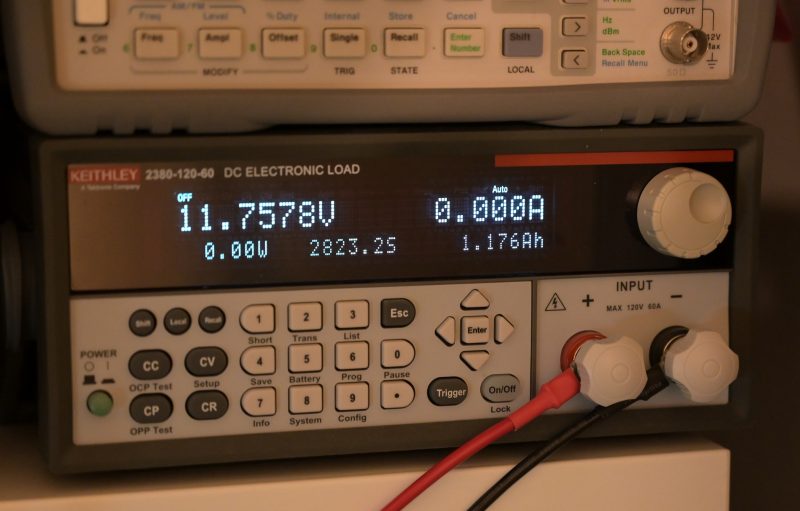In the case of the one I purchased: No.
Warning: this post contains a lot of technical details the average person isn’t going to care much for. Feel free to skip to the end.
I wouldn’t normally contemplate buying an “off brand” battery for anything, but this year genuine batteries for my 14.4V Bosch power tools (which I have a few of) were discontinued.
I could re-pack my batteries with quality cells, but for now, I’ve decided to give a common off-brand battery a go.
There are three main things we care about in a battery:
- Safety
- Longevity
- Capacity
I’m not going to be doing any safety checks here, and as for longevity, come back here in 5 years, I might give an update. For now all we can look at is capacity.
My cheapo battery, purchased from http://www.drillbattery.co.uk/ (which is a front for a Chinese operation which buys crap off Amazon on your behalf and has it shipped directly to you) is advertised with a capacity of 3.0Ah (3000mAh) – the same as the highest capacity genuine battery, a battery which cost three times the money. I’m already suspicious.
While it is possible to get a licked-finger-in-the-air measure of the capacity of a battery with two multimeters, a resistor, stopwatch and an exceptional attention span; testing the true capacity of a battery is rather difficult. This type of test is typically performed with a DC Electronic Load which has the necessary circuitry and software to perform this type of measurement.
For my test I’ll be using a Keithley 2380 DC Electronic Load – one of the best available at the time of writing.

There are two parameters we need to enter into it to perform this test:
- The discharge rate
- Voltage we consider the battery to be “flat”.

As can be seen from the above graph the battery is completely discharged at 1.0 V per cell, and as we tend to use power tools until the battery is totally dead (and often beyond) we’ll use that number for this test.
To conduct this test I’ll be using my trusty false charger – which allows me to safely connect the tool batteries to other stuff.

First I’ll run this test on a genuine battery. In this particular case a 3.0Ah battery part# 2 607 335 693. It is 4 years old, and I estimate it has been cycled about 250-300 times. It still performs well so am expecting it to be close to the advertised rating.

For the discharge rate I’ll go for 0.5C (discharge over 2 hours). Discharging too fast will give me a false low reading, and discharging too slow will take forever. I’m not a patient man.
The original battery tested at 2.12Ah. A little disappointing but given its age and regular use, about what we would expect.
Now for our crappy knock off:

From the feel and appearance of it I already have a bad feeling about this one.

And there we have it. The capacity of this battery from brand new, fully charged, measures at just 1.176Ah. Even at a puny discharge rate of 0.5C / 1.5A (a tiny fraction of what the drill would discharge it at) it only lasted 2823 seconds (47 minutes).
An astonishingly poor result and practically only a third of its advertised capacity of 3.0Ah. You get what you pay for. It’s a damn shame the option to pay more no longer exists.
Posted in Bits and pieces